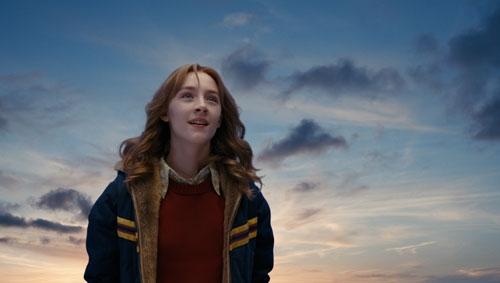The Lovely Bones, Alice Sebold’s 2002 bestseller about a murdered 14-year-old who hovers in metaphysical limbo over her grieving family, was once to have been filmed by the Scottish director Lynne Ramsay. On the evidence of Ramsay’s Ratcatcher and Morvern Callar, her take on Sebold’s novel would have been a moodily lyrical but deadpan reverie that wouldn’t have skirted its engagement with evil. When Ramsay’s involvement ended, the project was inherited by Peter Jackson, who for all his spectacular CGI work on The Lord of the Rings knew when to leaven Tolkien’s epic saga with restraint and humour. Sad to report, he has rendered The Lovely Bones as a giddy pageant that meretriciously prettifies the soulful heroine’s transition between earth and heaven while crucially glossing over her horrific termination.
Sebold has the girl, Susie Salmon, raped and dismembered. Jackson, who has said that he made the film for his 13-year-old daughter, makes no mention of these atrocities. In the book, Susie casually mentions that a dog found her elbow; in the film, the only physical detail relayed to her parents is that blood was found in the hole where detectives believe she was murdered. This is merciful in one respect. The Irish actress Saoirse Ronan fills Susie with such yearning and vitality in both life and death that contemplating the character’s desecration is arduous in the extreme, but the sanitising by Jackson and his co-writers Fran Walsh and Philippa Boyens on one hand, and the glorifying of Susie’s post-murder consciousness on the other, cost the movie integrity.
Until the murder, there are no ripples on the surface of Susie’s life with her parents, Jack (Mark Wahlberg) and Abigail (Rachel Weisz), her 13-year-old sister Lindsey (Rose McIver) and their small brother in a sunlit Pennsylvania suburb in 1973 - and no storms in her adolescence. She models ships in bottles with her dad so she can spend time with him. An aspiring photographer, she uses up too much film and gets a mild ticking off. She conceals the multicoloured woollen hat her mother knitted her so her friends won’t see it.
At school, Ray (Reece Ritchie), her handsome Indian crush, asks her to go on a first date at the mall. As she crosses a cornfield on her way home, the piece of paper on which he wrote a poem to her flies out of her hands. Mr Harvey (Stanley Tucci), an anonymous middle-aged neighbour who’s lingering there, invites her into the “clubhouse” he happens to have dug beneath the rotting corn husks and she naively steps into it. “Be polite,” he snaps when she refuses his offer of refreshment. He has a razor handy. By the time we see her fleeing from the spot at nightfall, she has already entered the ether.
Although Susie cannot be released into heaven until she has seen her family heal or her murder avenged, the “in-between” stage, where her brother uncannily locates her, is no purgatory but a bucolic Arcadia reminiscent of the Shire in The Fellowship of the Ring. Susie floats in a gazebo and is enigmatically advised by a little girl called Holly Golightly, another of Mr Harvey’s many victims - there’s a touch of The Little Prince about their quest to bring Susie resolution, and a suggestion that, like the murderous girls in Jackson's analogous Heavenly Creatures, Susie is a surrogate showman or fantasy director.
She shimmies in a cocktail dress against a city skyline, glides over a frozen lake decorated with ice sculptures. She inhabits the body of the psychic near-Goth girl who witnessed her spectral flight from the murder scene and so gets to enjoy a Ghost-like kiss with Ray at last. A bay at night becomes a harbour for all the ships in bottles that Susie and her dad worked on and which he smashed in his grief; Gilliamesque in its surrealism, it’s one of the most effective images in the film. Other images curdle. When Jack has Susie’s last roll of film developed and finds a photo of Harvey with his face obscured by a rose, he heads over to Harvey’s house and plucks a dead rose from a bush: it blossoms miraculously in his hand then withers along with his resolve to confront the man. As was demonstrated by American Beauty, another drama about cankers in suburbia, roses make for awful symbolism.
Awkwardly straddling the ghost story, the teen romance, and the suburban Gothic, The Lovely Bones wanly attempts the thriller, too. Once Jack’s obsessive drive to find the killer peters out, Lindsey takes up the hunt and breaks into Harvey’s house, but there’s no tension when he catches her, and she merely triggers his departure. Willed by dead Susie, fate inevitably catches up with him but in the most arbitrary way.
The film is a misfire, then, sunk by overwrought fantasy in a way that Heavenly Creatures was not, and so eager to please that its moral compass goes awry. Yet it’s one of those failures that should be seen, if not only for the excellent Ronan but for Susan Sarandon, who crashlands as a boozing, fag-ash-dropping grandmother from a 1960s time warp to provide a much-needed reality check. Alas, too late.














Add comment